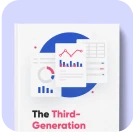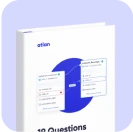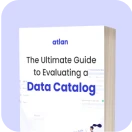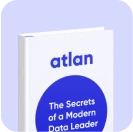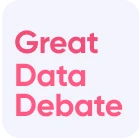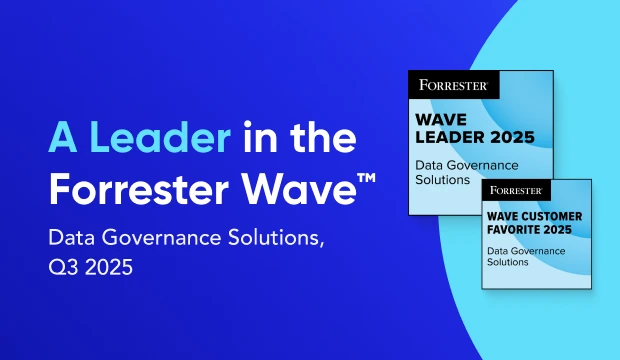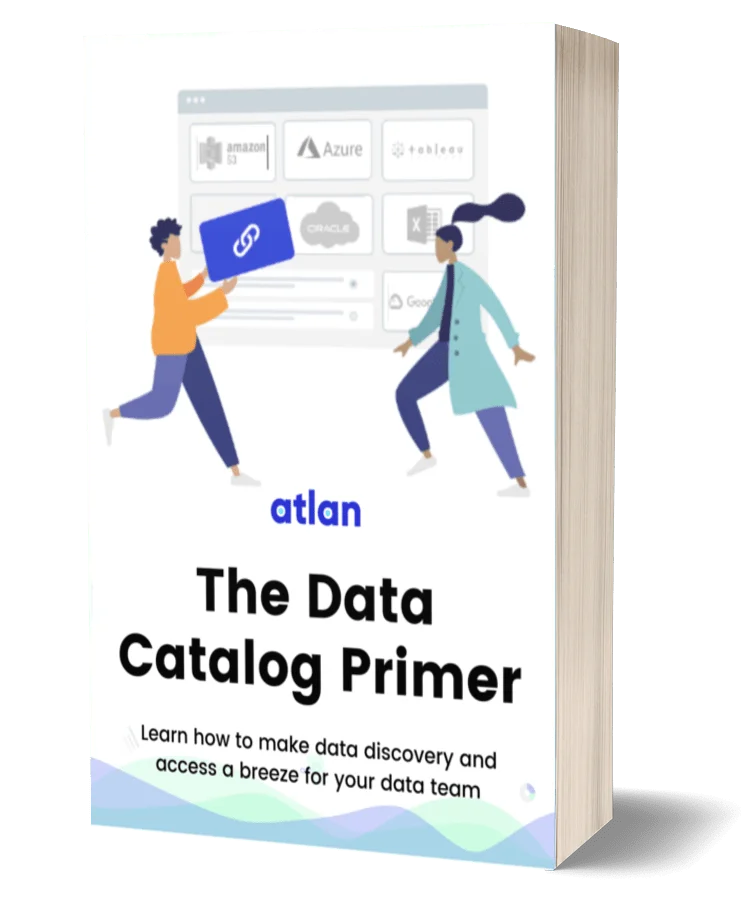Data Ingestion vs. ETL: Is There A Difference?

Share this article
Many terms are used interchangeably in big data, including data ingestion and ETL. This leads to queries like, “data ingestion vs. ETL — what’s the difference?”
Data ingestion is the process of compiling raw data as is - in a repository. For example, you use data ingestion to bring website analytics data and CRM data to a single location.
Meanwhile, ETL is a pipeline that transforms raw data and standardizes it so that it can be queried in a warehouse. Using the above example, ETL would ensure that the data types, attributes, and properties of the web analytics and CRM data align, and then loads them into a warehouse or data store for querying.
This article will further explore the concepts of data ingestion and ETL, their differences, and how to employ both to enable data-driven decision-making. Let’s start with data ingestion.
What is data ingestion? #
Data Ingestion is the process of collecting raw data from disparate sources and transferring it to a centralized repository. It’s all about moving data from its original source to a system where it can be further processed or analyzed.
A source can be anything — data from third-party systems like CRMs, in-house apps, databases, spreadsheets, and even information collected from the internet.
Meanwhile, the destination is a database, data warehouse, data lake, data mart, or a third-party application.
Why is data ingestion important? #
According to Gartner:
“The demand to capture data and handle high-velocity message streams from heterogeneous data sources is increasing. Data and analytics technical professionals must adopt a data ingestion framework that is extensible, automated, and adaptable.”
As the first step in data integration, data ingestion helps you ingest raw data — structured, unstructured, or semi-structured — across data sources and formats.
You can schedule batch data ingestion jobs to pull data from various sources into a central location periodically. Alternatively, you can ingest data in real-time to monitor changes in data continuously. We cover this further under data ingestion types (the next section).
Regardless of the data ingestion type, the main benefit is in making data available throughout the organization. For example, traditionally, CRM data is accessible to marketing and sales teams. Ingesting CRM data into a warehouse makes it available to all teams, which helps in eliminating data silos.
So, data ingestion plays a crucial role in building any data platform that acts as a single source of truth for all organizational data.
What are the types of data ingestion? #
You can perform data ingestion in several ways, but there are two main types of data ingestion:
-
Batch data ingestion: Data is collected periodically, in large jobs or batches, and transferred to the destination — warehouses, lakes, or analytics applications.
For example, you can create a daily report aggregating all the transactions done in a day using batch data ingestion. In this case, transaction data — probably millions of records — get ingested in batches every night. Since batch ingestion works on large volumes of data, it can take longer, usually hours, for the process to complete.
-
Streaming data ingestion: Data is collected in real-time and loaded immediately into a target location. So, as soon as data is available at the source — third-party applications, logs, web data — it gets ingested into a destination such as a lake or a warehouse.
For example, systems monitoring a patient’s vitals record time-sensitive data — heartbeat, blood pressure, oxygen saturation, etc. The systems dealing with such data must read it continuously and in these cases, streaming data ingestion is ideal.
There are two more things to note about batch vs. streaming data ingestion.
Unlike batch ingestion, there’s no set period for streaming data ingestion as it occurs as and when new information is available. Moreover, the amount of data to be ingested is significantly lower as compared to batch data ingestion.
How do you do data ingestion? #
Let’s begin by looking at the components of a data ingestion pipeline. The two vital components are sources and destinations:
- Sources: Besides your internal systems and databases, other data ingestion sources could be IoT devices, web data, system logs, and third-party applications.
- Destinations: As mentioned earlier, these can be data lakes, warehouses, lakehouses, and marts. The most common destination types include cloud stores such as Amazon S3, Google Cloud Storage, Microsoft Azure, Snowflake, and Databricks.
Now, let’s look at data ingestion in action. Data ingestion compiles data from disparate sources (in batches or in real-time) and loads it into a destination or staging area in its original form.
Let’s break the above definition further by understanding the concepts of original form and staging area.
Original form implies that the source data is imported to the staging area without any changes to its fields or data types.
Next, let’s expand our understanding of the staging area. Here’s how DZone describes it:
“The landing zone is a storage layer, which acts as a staging area for data. This zone is composed of several cloud object storage organized by data domains. The goal of this layer is to provide a delivery entry point for the different data sources.”
At this stage, the data isn’t ready for querying or analytics. That’s where ETL comes into the picture. Using ETL pipelines, you can transform the raw data — standardize it so that it’s in the right format for querying.
Let’s explore the concept of ETL (Extract, Transform, Load) further.
What is ETL? #
ETL (Extract, Transform, Load) is a data integration pipeline that:
- Extracts raw data from various sources and formats
- Transforms that data using a secondary processing server
- Loads the transformed, structured data into a target database — usually a data warehouse
Here’s how IBM puts it:
“Through a series of business rules, ETL cleanses and organizes data in a way which addresses specific business intelligence needs, like monthly reporting. It can also tackle more advanced analytics, which can improve back-end processes or end-user experiences.”
Examples of ETL tools include Fivetran, Stitch, and Xplenty.
What are the benefits of ETL? #
ETL plays a crucial role in data transformation — the key to curating high-quality data in a ready-to-use format. It’s also essential to ensure interoperability between systems, applications, and data types.
According to G2:
There’s a continually increasing number of devices, websites, and applications generating significant amounts of data, which means there will be data compatibility issues.
Data transformation empowers organizations to make use of data, irrespective of its source, by converting it into a format that can be easily stored and analyzed for valuable insights.”
As a process that facilitates data transformation, ETL enables data analysis with high-quality, reliable, and standardized data.
Moreover, since you must define the rules of data storage, security, and privacy beforehand, ETL pipelines can also help you with regulatory compliance and data governance.
Now, let’s compare data ingestion vs. ETL.
Data ingestion vs. ETL: Exploring the differences #
As we discussed earlier, data ingestion moves raw data from source to destination. Meanwhile, ETL helps you extract value from the ingested data by transforming and standardizing it.
The table below summarizes the key differences between data ingestion vs. ETL.
| Aspect | Data ingestion | ETL |
|---|---|---|
| Definition | The first step in the data integration process to transfer raw data from a source to a central storage destination | A data integration pipeline to organize ingested data in a standard format in a repository like a warehouse |
| What is it? | Data ingestion is a process. You can use various methods to ingest data into a staging area | ETL is a pipeline that works on the data in the staging area to standardize it |
| Purpose | Facilitate the process of establishing a centralized repository for all data and make it available for everyone within the organization | Standardize your data in a format that’s easy to access, understand, and use for deriving insights from data |
| Tools | Apache Kafka, Apache Nifi, Wavefront, Funnel, and Amazon Kinesis | Fivetran, Stitch, Xplenty, Informatica PowerCenter |
Data ingestion + ETL: Get started with data transformation #
Data ingestion and ETL play a critical role in integrating data from disparate sources and preparing it for analytics, reporting, and BI.
Data ingestion brings together raw data from various sources to a staging area for further processing. Meanwhile, ETL transforms data and makes it available in a format that’s ready for querying.
The order of the processes depends on your use case and data transformation goals.
If you wish to learn more about the step-by-step process involved in making your organizational data useful for everyone, check out this article on data transformation.
Data ingestion vs. ETL: Related reads #
- Data ingestion 101: Using big data starts here.
- ETL vs. ELT: Exploring definitions, origins, strengths, and weaknesses.
- 10 popular transformation tools in 2023.
- Data ingestion vs. data integration: How are they different?
- Top 5 ETL Tools to Consider in 2023.
- Top 6 ELT Tools to Consider in 2023.
Photo by Mathias P.R. Reding on Pexel
Share this article


